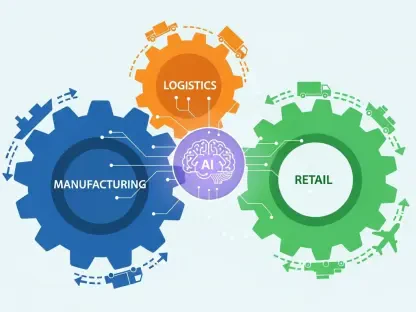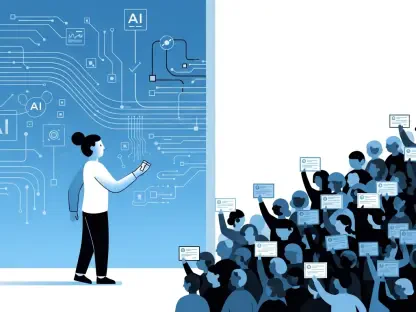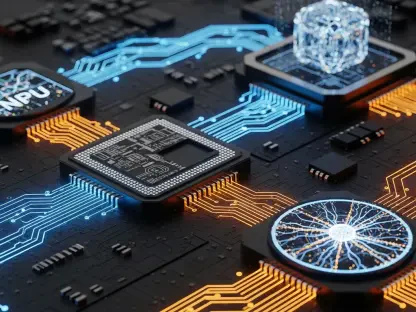In a world where technology intertwines with nearly every aspect of life, the legal system has not been exempt. Laurent Giraid, a renowned technologist specializing in artificial intelligence, shares insights into how generative AI is beginning to play a significant role in the US legal landscape. With applications ranging from legal research to courtroom presentations, AI is transforming how justice is served.
How widespread is the use of generative AI in the US legal system today?
Generative AI is more embedded in the US legal system than many might assume. It’s gradually becoming a quiet yet powerful force used by judges and lawyers, not always in the spotlight, but certainly present in their research and decision-making processes.
Can you provide specific examples of how judges are utilizing generative AI for research purposes?
Judges often utilize tools like ChatGPT for drafting and refining their opinions. While these tools offer efficiency and broaden perspectives, it’s crucial that judges undergo proper training to ensure they are harnessing these technologies effectively.
How are lawyers incorporating generative AI in the process of filing appeals?
In legal appeals, attorneys employ generative AI for tasks such as researching case law, drafting documents, and generating arguments. It saves valuable time, allowing lawyers to focus on developing comprehensive strategies tailored to their specific cases.
What impact has generative AI had on parties representing themselves in court?
For individuals representing themselves, generative AI can act as an informal guide, simplifying complex legal language and procedures. However, without an attorney’s oversight, there’s a risk of submitting inaccurate legal documents, which can complicate their cases further.
Could you explain the instance where generative AI helped a murder victim present a statement in court?
In a groundbreaking case, a digital avatar created via generative AI read a statement from a murder victim during the sentencing phase. This unique approach humanized the victim, providing the judge with a more personal view of the case’s impact, demonstrating AI’s potential in diversifying court testimonies.
What was the judge’s reaction to the use of a video avatar for courtroom testimony?
The judge appreciated the avatar’s authenticity, acknowledging the emotional depth it brought to the proceedings. It set a precedent for how AI could foster more nuanced judicial deliberations by offering perspectives that traditional methods might not capture.
How has the use of generative AI in legal settings evolved since its initial introduction?
Initially, there was skepticism about AI’s role in the legal sphere. Over time, as technology improved and integration methods were refined, its potential for efficiency and accessibility became more evident, leading to its broader acceptance by legal professionals.
What are the primary advantages of using generative AI for legal research and case preparation?
The most significant benefits lie in time savings and expanded access to information. AI can sift through vast amounts of data quickly, providing lawyers with relevant insights and freeing them to focus on strategic elements of case preparation.
Are there any risks or drawbacks associated with relying on generative AI for legal work?
One major concern is accuracy. Misleading citations or fictional case references can arise if the AI’s outputs aren’t carefully vetted. Generative AI is a tool that augments human expertise but should never replace critical human oversight.
Can you elaborate on the “horror story” where AI provided mixed-up legal citations?
Instances have occurred where AI-produced documents contained incorrect or fabricated legal references, leading to costly errors. Such incidents underline the necessity of stringent verification to maintain trust and integrity in legal processes.
What potential challenges do courts face as generative AI makes it easier to file legal complaints?
With AI simplifying the drafting of legal complaints, the courts could face increased caseloads. This influx puts pressure on judicial resources, requiring systemic adjustments to manage the volume without sacrificing quality and fairness.
How can courts prepare to handle an increase in caseloads due to generative AI?
Adapting to this rise involves leveraging technology to streamline administrative processes and investing in training for legal professionals to utilize AI efficiently. Balancing innovation with traditional practices is key to maintaining judicial efficiency.
What role does generative AI play in providing access to justice for people without legal services?
Generative AI democratizes access to legal knowledge, offering guidance for those unable to afford legal representation. While beneficial, it’s critical to ensure users understand its limitations and complement AI-generated insights with professional legal advice where possible.
How important is technological training for judges when it comes to using AI tools like ChatGPT?
Technological fluency is increasingly essential for judges. Training ensures that they can critically assess AI’s contributions, leveraging its capabilities to enhance decision-making without compromising judicial standards or ethics.
What influence could generative AI have on the outcomes of legal cases compared to human law clerks?
AI might reveal different angles in legal arguments, potentially swaying judicial decisions akin to those insights brought by human clerks. Yet, its influence hinges on not only its informational accuracy but also the context provided by human interpretation.
Do you believe that generative AI could lead to more well-grounded rulings that are less likely to be overturned on appeal?
If employed appropriately, AI could indeed contribute to more robust rulings, ensuring comprehensive analysis and minimizing oversights. However, success depends on the technology’s integration within a framework of expert human judgment.
How should the legal system approach integrating generative AI tools to ensure they are used effectively and ethically?
A balanced approach involves setting clear guidelines, ensuring rigorous training, and maintaining a continuous evaluation of AI’s role in legal processes. Emphasizing ethical considerations is paramount to prevent misuse and uphold justice.
What future developments or improvements in generative AI might further benefit the legal profession?
Advancements in natural language processing and greater accuracy promise to expand AI’s utility in legal contexts. With ongoing improvements, AI could offer even deeper insights and facilitate a more equitable legal system, provided human oversight remains diligent.









